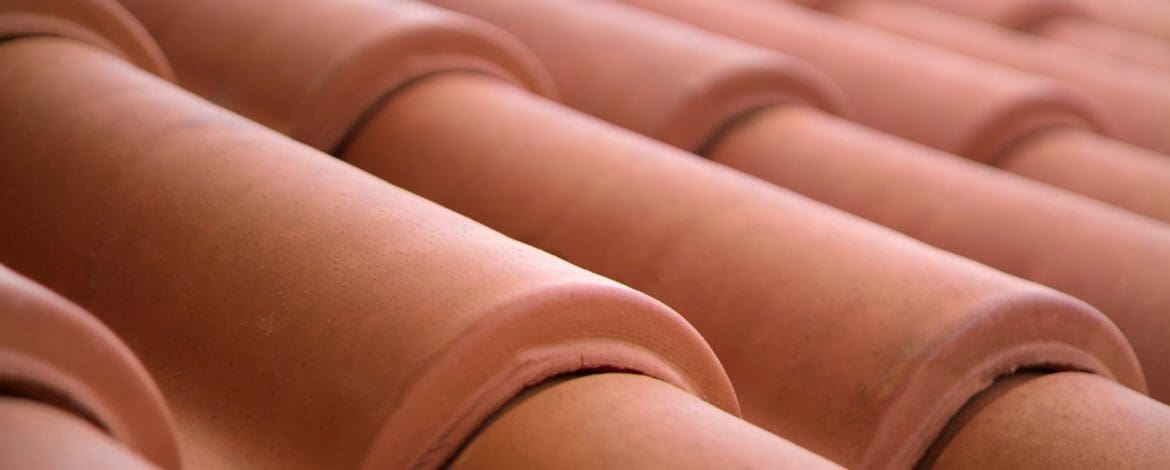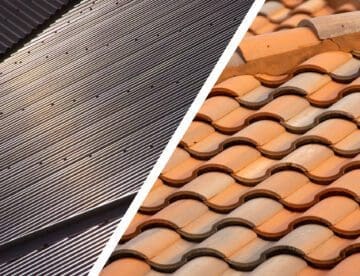Asphalt shingles cover the vast majority of roofs in the U.S., but they’re not the only option. If you have a choice of roofing material for your home’s new roof, checking out metal roofing and tile roofing makes sense. Both materials are much more durable than asphalt shingles, and more expensive, too. They’re both considered a “premium” roofing material, and we’d say they’re definitely worth the extra money, if that makes sense for your budget. What’s the cost of a metal roof vs. a tile roof in Florida?
Your Options for Metal Roofing
You’ll have a multitude of options with metal roofing. You can choose from steel, aluminum, Galvalume, zinc, and copper. Each has certain advantages as well as drawbacks. Most of these materials come in large sheets, but steel and aluminum are also available as tiles. And sheet-metal roofing can either be attached with exposed fasteners or with concealed fasteners. That’s a lot of options to consider! But we’ll explain each type so you can compare costs among all the options, and with clay and concrete tiles.
Why Choose Steel Roofing
Steel offers a host of advantages. It’s incredibly strong, yet not very expensive. It’s recyclable, and available in a huge variety of options, including different profile shapes and colors. Steel roofing handles high winds as well as any material you can get. And with large sheets, in particular, your roof will have the fewest number of seams, so there will be fewer potential points for leaks to occur.
The roofing crew, also, will probably fold the end of each sheet under at the lower edge of the roof, which makes for a super-strong attachment. It’s less likely that the wind will be able to get hold of an edge and peel the roofing back, destroying that part of the roof—or maybe the entire roof.
The downside of steel roofing, of course, is rust. Naturally, in coastal areas with high humidity and salt air, the risk of rust is greater than in an arid climate. The greatest chance for rust to develop is at any cut edge. All roofs will have some cut edges for flashing and penetrations, but some roofs have just a few such edges, depending on the number of penetrations and valleys.
Another advantage of steel sheets is the option to use one sheet from eave to ridge, rather than two or more sheets with overlapping seams. Steel is available in huge rolls, and contractors can use a machine that presses the profile into the sheets on site. The workers cut the sheets to the exact length needed, with no need for seams between the eave and the ridge. It’s a very tidy and clean look. It’s also highly durable.
How Is Steel Roofing Fastened?
Sheet-steel roofing can be fastened with exposed screws, or with concealed screws. Roofing with exposed screws, sometimes called “screw-down” roofing, will be cheaper. It’s also not allowed by many homeowner’s associations (HOAs), so if your home is in an HOA, you’ll need to know if this type of roof is an acceptable option. Though screw-down roofing has been used everywhere for decades, it does have more of an industrial or agricultural aesthetic. That said, this is a solid choice for areas like Florida with high winds, heavy rainfall, and high humidity. Be assured, steel is a top-quality roofing material. You’ll pay from $550/square for a screw-down roof, and you can expect this to be a 25-year roof. Probably more, though, if your contractor does good work.
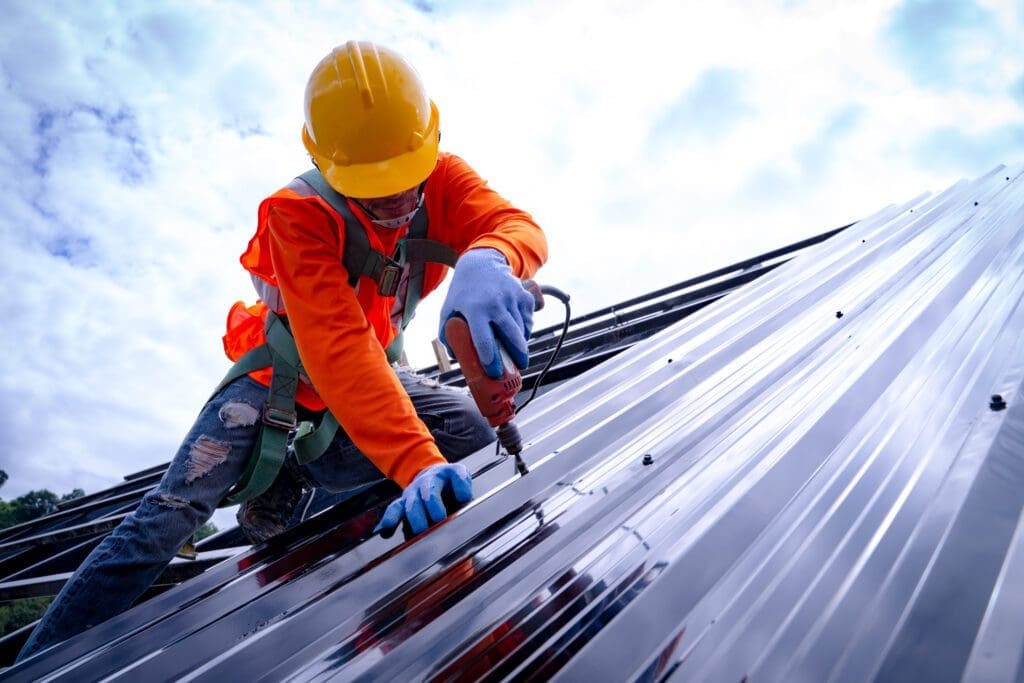
In comparison, popular architectural asphalt shingles will cost around $320–340 per square, including materials and installation. The cheapest three-tab shingles come in at around $260 per square, on average.
Steel sheets can also be attached with concealed fasteners. This is considered an upgrade, as you’ll end up with a roof with no visible fasteners. Instead, hidden metal clips are attached to the roof deck, and the sheets are attached to the clips. You end up with an incredibly durable and clean-looking roof. It’s more work, though, so it costs more. Any metal roof with concealed fasteners, in fact, will take roughly 2-3 times longer than asphalt shingles for installation. That explains a huge chunk of the extra cost, which will start at around $1000/square for steel sheets with concealed fasteners.
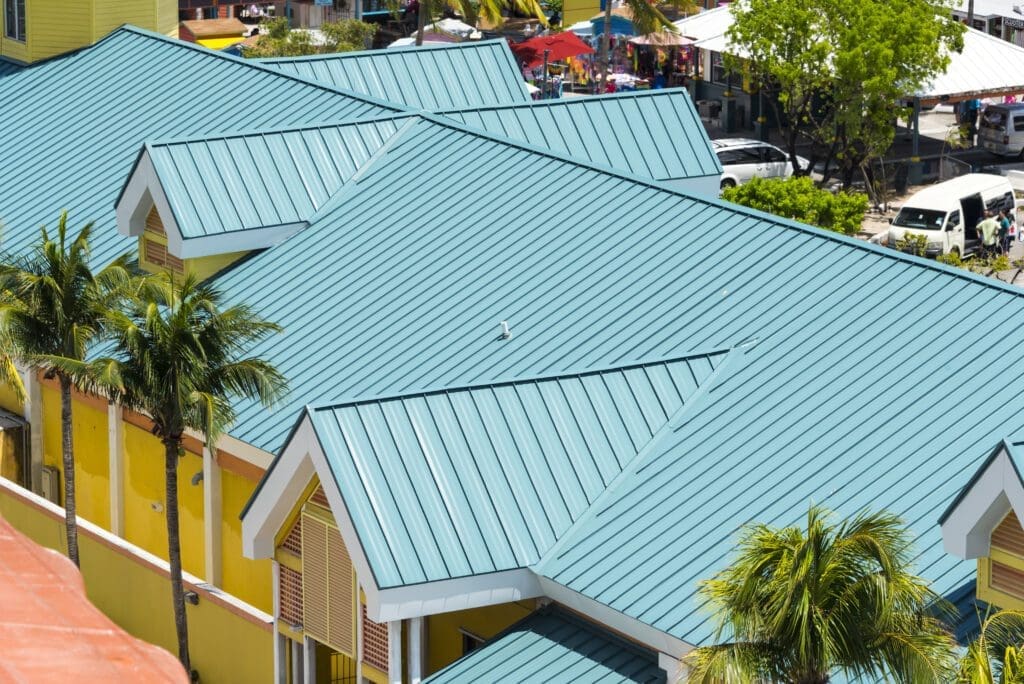
Steel Tiles/Shingles
Many people are surprised to learn that the shingles or tiles on neighboring homes are not wood, slate, or clay, but steel. This product provides numerous functional advantages, as well as an aesthetic appeal that other roofing products can’t match.
Steel tiles offer incredible strength, as they’re stamped in a press. They have a hidden clip mounting system, so the outer appearance is totally clean and without fasteners. In addition, the panels lock together, making the roof monolithic and strong. They also have some texture built in, so tend to conceal any variations on the roof surface.
In addition, they offer the classic look of slate shingles or clay tiles, but at a fraction of the weight. You can upgrade from a standard asphalt shingle roof to steel tiles without upgrading your home’s roof framing, which could cost thousands of dollars. This type of roof will start at around $750/square, and is truly a long-term roof with 40+ years of service expected.
Galvalume Roofing
Galvalume is a specific type of coating for steel sheets. It’s made of zinc and aluminum, so it resists rust better than standard steel sheets. In coastal areas, you can expect Galvalume to perform better than other types of steel sheets. That said, the manufacturer probably won’t provide a warranty in coastal areas, but you can expect 20+ years of service. At around $550/square, this product offers great value with the strength of steel and corrosion resistance closer to aluminum. You can add a painted finish, so essentially you’ll be getting a painted sheet-steel roof with extra corrosion protection.
Aluminum Roofing
This type of roofing is a top choice for coastal areas. Aluminum won’t rust, and you can get it in both sheets and shingles, or tiles. Aluminum is a weaker metal than steel, to be sure, but it’s performed well for decades in both residential and commercial applications. You can choose unfinished aluminum, but this isn’t a popular choice. It’s sort of a dull gray, and while it’s not ugly, it’s not beautiful either. Aluminum is available with a durable paint coating, and in this case looks just like sheet steel roofing.
In fact, steel sheets, Galvalume sheets, and aluminum sheets are all available with a Kynar 500 resin coating, which performs well over 25+ years. It looks like paint, so you just choose the color you want and your contractor places the order.
Aluminum is also available as tiles or shingles, just like steel. Again, in coastal areas aluminum is particularly appealing, as it will never rust. Sheet aluminum roofing will start at around $750/square, and standing seam aluminum roofing will be in the neighborhood of $1200/square. Aluminum tiles will start at around $1000/square. Even without a material warranty, which is typical in coastal areas, you can be confident that you have a great roof for 30+ years.
Zinc Roofing
At the top tier of metal roofing materials, both in cost and durability, you’ll find zinc and copper. Zinc is strong like steel and doesn’t rust. It also develops a patina over time. Whether or not you like the patina is subjective, but it is functional. The patina has the ability to “heal” from scrapes, so it will regenerate the patina wherever there’s damage. Obviously, this is a positive attribute in an area with high winds and intense storms, including hurricanes. Zinc is often compared to copper because of the patina and the fact that it won’t rust. However, zinc offers a more subtle look. Copper is bright and bold, and you’re not alone if you prefer a more subdued appearance. Expect to pay more than $1200/square for this roof that should last more than 80 years.
Copper Roofing
When it’s time to make a bold statement, copper roofing is often the choice. It starts off shiny and weathers over time to that classic green verdigris patina. High-end homes and commercial projects, as well as institutional projects like museums, benefit from copper roofing and its unique appeal. Copper offers real value in real-world applications. You can expect to pay $1500/square and up. It’s expensive, but it’s also a 100+ year material.
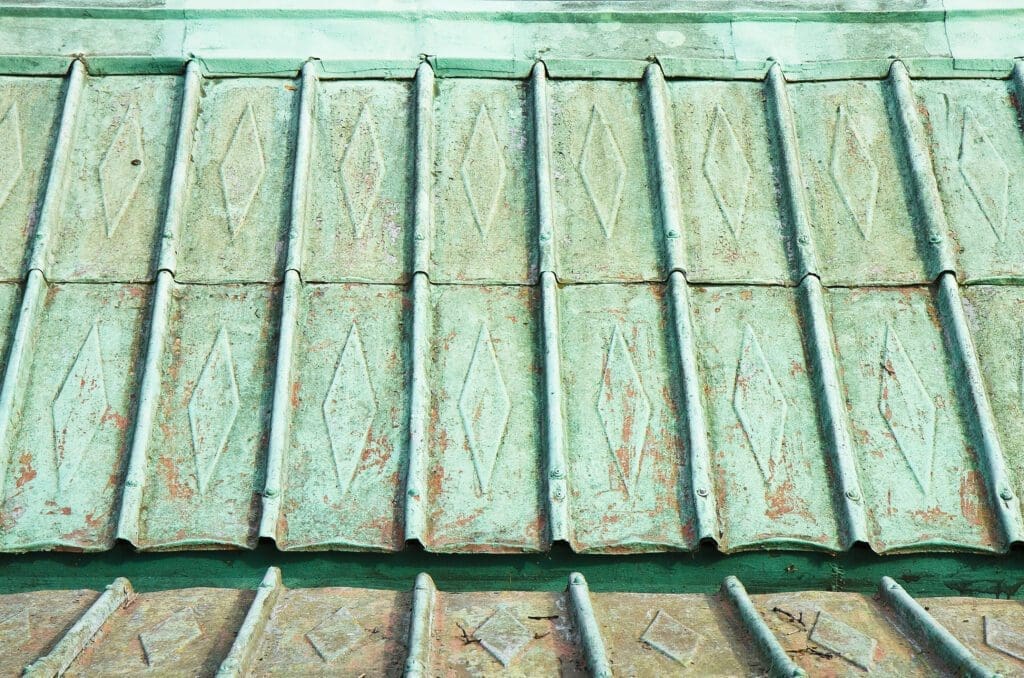
Options for Tile Roofing
For a classic and substantial look, you cannot top clay and concrete tiles. They provide a sense of “heft” that complements almost any home design. You can also choose from several different styles, or profiles, that are quite distinct. You might be surprised to learn how much these two tile options differ, considering how similar their appearance. In addition, be advised that both clay tiles and concrete tiles weigh more than other roofing options, which might mean that your contractor will need to reinforce the roof framing. Asphalt shingles usually weight from 200-500 pounds per square. Clay tiles typically weigh more than 600 pounds per square, and concrete tiles will weigh more than 800 pounds per square.
Why Choose Clay Tiles?
Clay tiles have been used for centuries all over the world, and they’re available as flat tiles, like a shingle, as well as in an “S” shape. Flat tiles are a simple product that you can order with a square edge, or a rounded “fish scale” appearance. They can be quite stylish. The “S” shape tiles nest together to provide excellent weather protection.
Overall, clay tiles offer more advantages than concrete tiles, and they do cost more. First, clay tiles absorb less moisture than concrete, just half as much. That means your clay tile roof will be less likely to develop mold, mildew, or algae growth over time. Clay tiles are also available in multiple earth-tone colors. The color runs throughout each tile, making for a consistent appearance. They will also endure like copper and zinc roofs do, for many decades, and potentially for more than 100 years. Clay is that sort of material.
The major drawback for clay tile roofing is cold-weather performance. In cold climates, clay tiles are more likely to crack than concrete tiles. In Florida, that’s not going to be an issue.
Finally, there’s the cost. Clay tiles come in a large range of cost, from around $1400/square, on up to more than $2500/square.
Why Choose Concrete Tiles?
Concrete tiles have been part of the mix of roofing options for about 20 years. They’re made the way other concrete products are made, with Portland cement, aggregate, and water. Concrete tiles can be flat or “S” shaped, like clay tiles, and they come in multiple colors. Newer options have a different finish applied that aims to emulate wooden shakes, slate tiles, and so on.
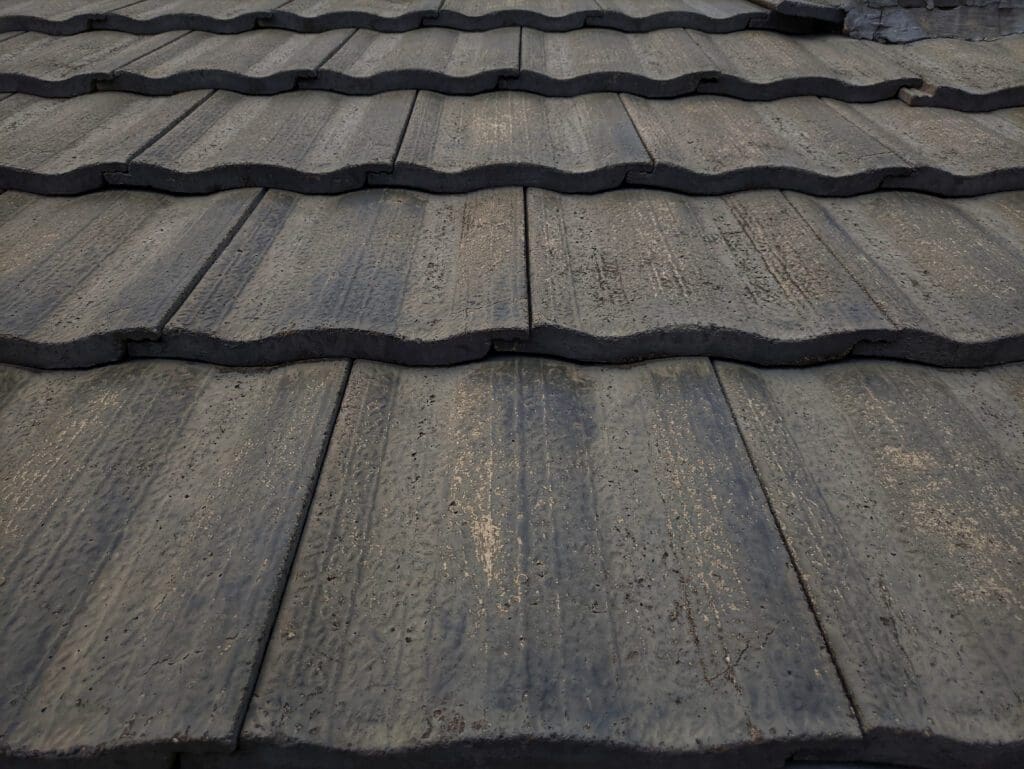
For the most part, you’ll have two reasons to choose concrete tiles over clay tiles: cost and cold. As we mentioned, concrete tiles withstand a cold climate better than clay tiles. As for cost, concrete tiles will start at around $950 per square, and can top $2000 per square depending on your choices. So your average cost is $1500-1600 per square, comparable to premium metal roofing option.
For longevity, concrete will not be able to match clay tiles. But you’ll probably see more than 40 good years from a concrete tile roof, so that’s impressive.
We’re Here When You Need Us
Any metal or tile roof is an upgrade over an asphalt shingle roof, but there may be a lot of factors to consider before you make your choice. If you’d like to talk about replacing your roof, give us a call at 813-373-9088. Our team has more than 40 years of experience in roofing. You can also use this form and ask us, “what’s the cost to replace my roof?” and we will contact you.
CLICK HERE FOR AN INSTANT ONLINE QUOTE IN 60 SECONDS
clear

